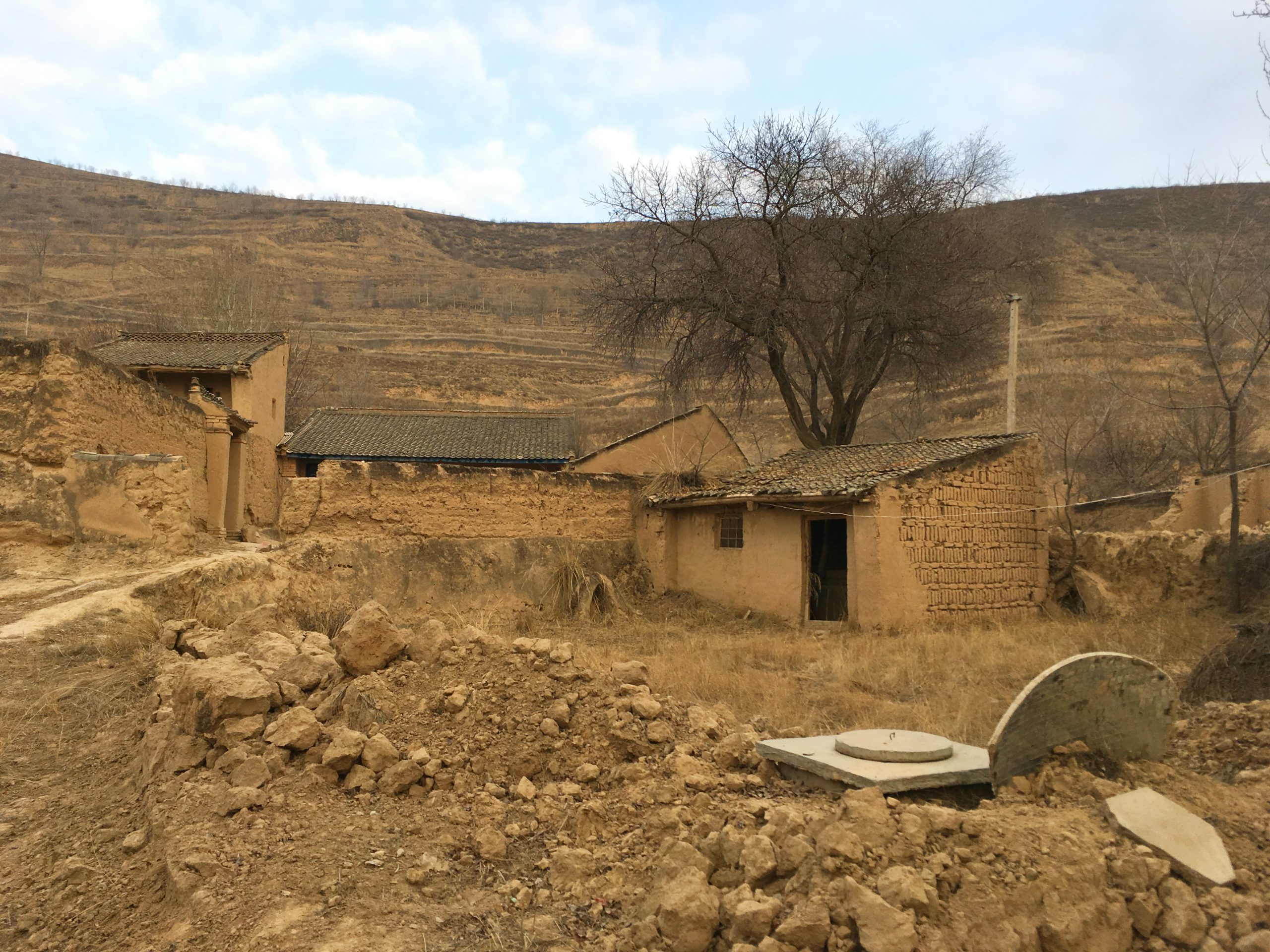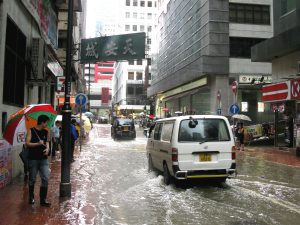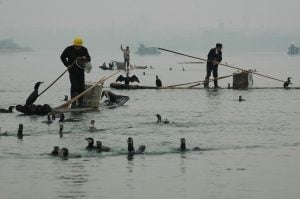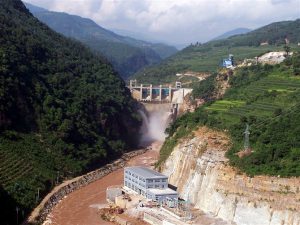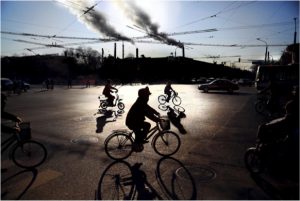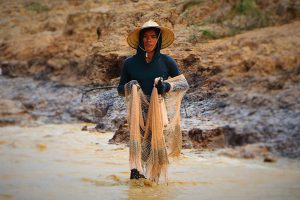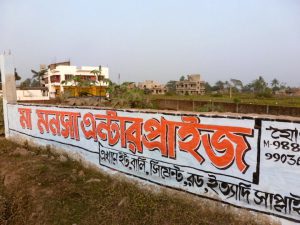Drive south on the Beijing-Tibet expressway from Yinchuan, the capital of Ningxia province in China’s north-west, and you’ll notice the earth take on a yellowish hue. The land is cut by deep gullies from the far-off hills and crossed by modern bridges, but looking down you’ll see no sign of water. In the fields, a few scattered shepherds squat, watching over their flocks of grazing sheep.
This is Xihaigu. It’s not a name you’ll find on a map, but a colloquial term for seven counties in the south of Ningxia. This area is home to some of the least fertile land in China’s north-west.
Although economic development and years of government funding have helped to address poverty here, the semi-arid climate means that water is scarce. Climate change is making conditions even worse, leaving the population worried about how it will cope with water shortages.
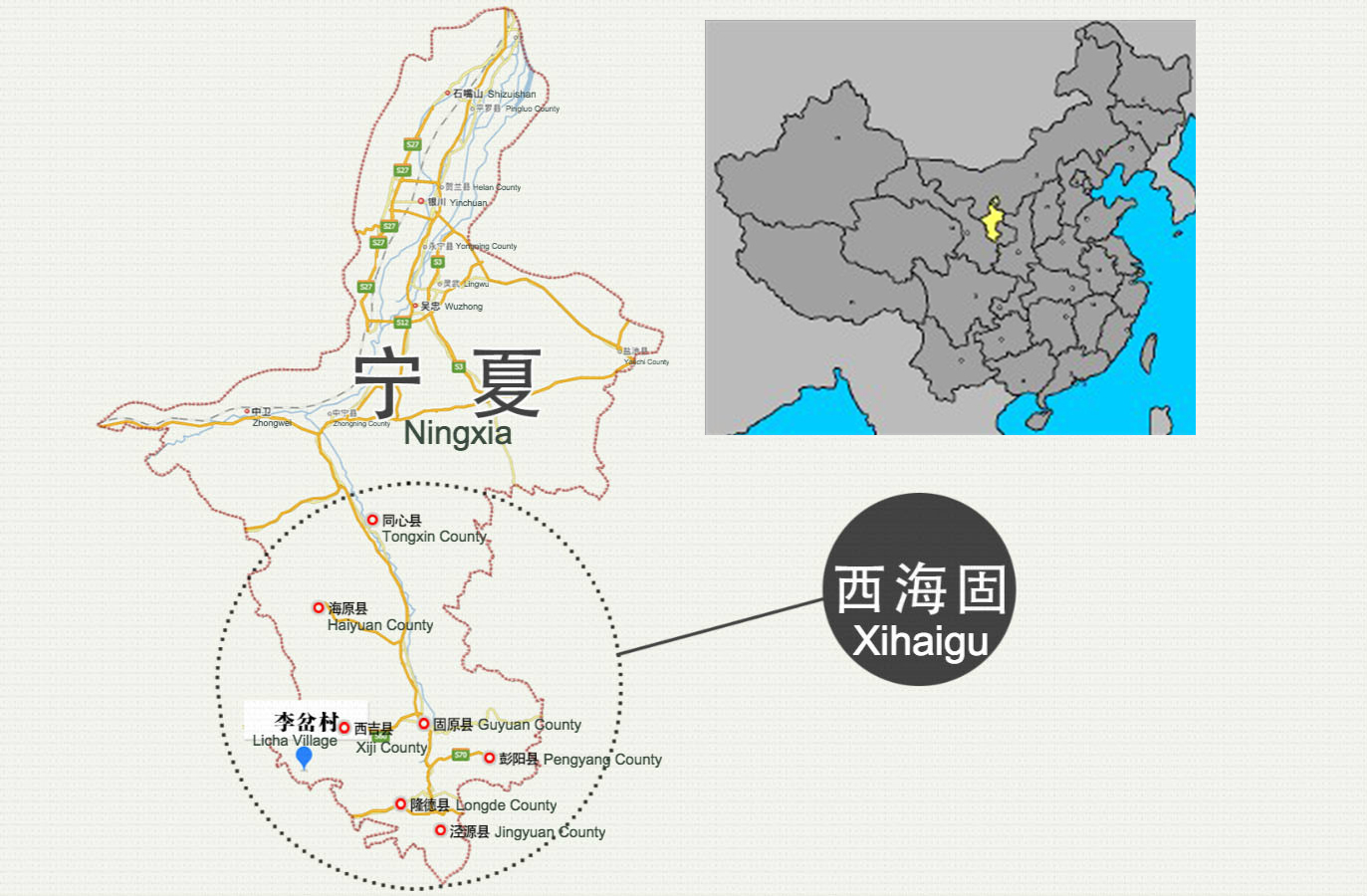
Water worries
Figures from the meteorology bureau in Xiji county, Ningxia, show that between January and July 2016, rainfall was between 6.9% and 17.5% lower than the yearly average in some locations. In mid-August, the temperature hit its highest level since 1961, while rainfall saw a new low, triggering localised droughts. In response the local government created artificial rain. Potato harvests dropped by 10%.
Drought on Xiji’s plateau is worsening at a frightening pace. Between the 1970s and the 2000s the average temperature increased by more than 1°C, while average annual precipitation fell by about 100mm between 1950 and 2000. This is drying out the soil on the loess plateau and hurting crop harvests.
“We didn’t see much rain at all this year, and the potatoes were only as big as your fist,” says Ma Lina, holding up her hand to demonstrate. She’s 13 and lives with her family in the village of Licha, in Pingfeng county, deep in the loess hills and gullies.
Her father, Ma Jifeng, says their potato harvest provides an income of over 10,000 yuan (US$1,453), as well as a staple food for the family. But this year the crop was poor and prices low. Potatoes and wheat are major sources of income in the area, alongside sesame and various autumn grains.
The drought is also affecting the local water supply. Ma Lina’s classmate, An Xiaokang, also lives in the village. He recalls when there was a stream in the gully running through the village. The year before last he caught tadpoles there but now there’s nothing but a dry riverbed.
Nowadays, it’s rare to find clean water when drilling a well, with most producing salty or bitter water. Soluble solids and sulphates exceed permitted levels by several times according to the Xiji county water authorities. Even local reservoirs are filled with salty water.
“There used to be several good wells near the village but there are far fewer now. There’s just less water in general,” says An Xiaokang, watching a herd of cattle pass by on their way to drink.
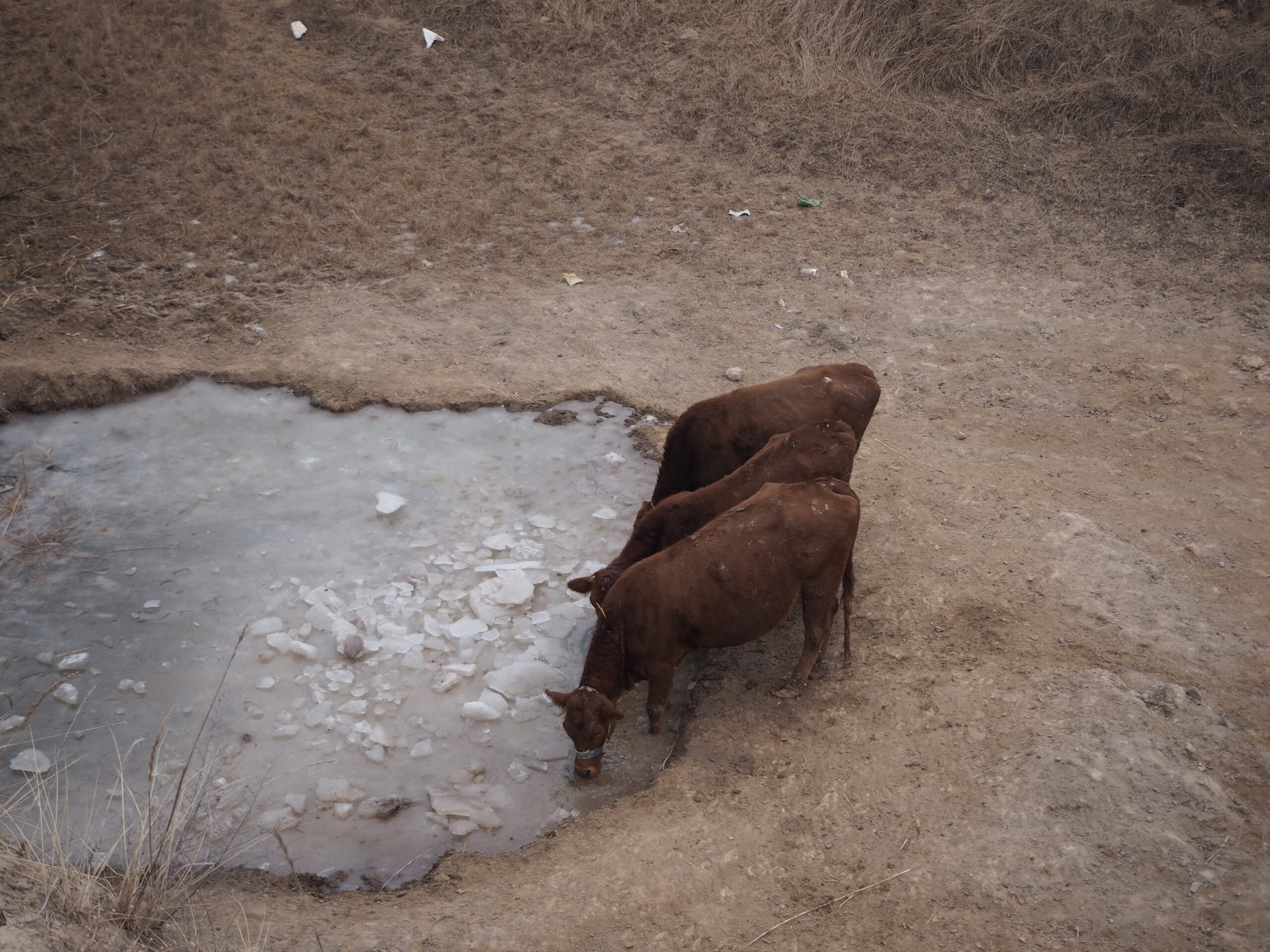
Water management
With less rainfall, people in Xihaigu have grown careful to store water and reuse it. Ma Lina’s family capture it from the surrounding grounds and the roof of their home and store it in cisterns. Funded by the government, Ma Lina’s family have a tank for the home, another for the livestock, and one more to help irrigate their fields. In the house, there’s a water bucket near the basin where grey water is poured for reuse.
Better agricultural techniques could boost the income for those labouring in the arid fields of Xihaigu. In a paper on the impact of climate change on the livelihoods of farming households in Xiji, Dai Hailong of Ningxia University’s School of Resources and Environment says “planting of drought-resistant and water-efficient crops should be expanded, to better cope with water shortages. Autumn planting should also be expanded.”
In 2015, An Xiaokang’s grandfather, An Jianhua, started covering some of his potato fields with a protective covering. Despite lower rainfall, the potatoes grown under plastic were of a good size. An Jianhua dreams of better irrigation techniques that would let him use stored water to nourish his terraced fields, or of growing more suitable crops like fruit trees or medicinal plants.
There are myths in Xihaigu about a Jade Dragon god that can summon the rains.
“About twenty kilometres away there’s a lake, Dawn Lake, and there’s a white dragon there which can call up the wind and rain,” says An Xiaokang, remembering tales the old folk told him when he was little. “In the past, people would pray to the Jade Dragon in times of drought. Ample water has been a luxury for generations.”
Every house in Licha now has a tap outside next to an access hatch marked “Ningxia Xiji Urban-Rural Water Company”. The taps are part of a four billion yuan (US$581 million) water security initiative for central and southern Ningxia. Last October, the Ningxia government held a ceremony in nearby Yuanzhou to celebrate its completion.
The taps in Licha have been in place for ages and cost households 500 yuan to install but there’s still no water. A village official explains that most of the water supply project is complete but the complex terrain means further work is needed before everyone will have access.
An official with the drinking water office at the Xiji Water Bureau says that the reasons Licha remains unconnected are complicated, but one factor is that the drought has meant the Zhongzhuang reservoir has never been filled and currently is unable even to supply urban areas. The reservoir cost 230 million yuan (US$33.4 million) and is essential to supplying water for the entire project.
Bringing in fresh water from the Jing River to Xiji would help solve temporary water shortages. Villagers in Licha are also looking forward to the arrival of the South-North Water Transfer Project (a controversial scheme to pump water from the south of the country to the parched north).
It looks like the pipes and dusty taps in their front yards will remain dry for a while longer. But An Jianhua thinks that patience will pay off. Ten years ago the villagers would never have even dreamed that the water supplies that city dwellers took for granted could ever reach their remote mountain village, as the transfer project promises to do.

Restoration and relocation
As well as bringing in water, the local government is trying to improve the resilience of the local environment to a changing climate. Efforts to return farmland to forestry started a decade ago in Ningxia and have succeeded in restoring some vegetation.
Ningxia was the first province in China to ban livestock grazing on hills in 2003. Figures released by the Ningxia government show that vegetative cover increased from less than 10% to 12.8% over the course of a decade, while there was a net reduction in land affected by desertification of 795,000 mu (530 sq km)
Ma Lina opens a drawer and pulls out a plastic bag containing a bundle of photographs. She selects one, taken last summer from the door of their new home. It looks green and shady up on the hills compared to the barren soil of today.
“That’s how it looks in summer, it’s lovely!” she says, proudly. There are apricot orchards on the hillside, which turn green in the warmer months.
Efforts to restore the local environment are starting to bear fruit but it’s been a challenge to change local working practices. Some people don’t understand why the government bans grazing on the hills, for example, and on the more remote hillsides you can still see them.
The government is also relocating people away from ecologically sensitive areas. There have been four such moves since 1983, with the land later restored.
In 2011, the provincial government revealed a new plan to relocate residents in south and central Ningxia:
“Nine poor counties in south and central Ningxia, including Xiji, lie in the farming-pastoral transitional zone between the semi-arid loess plateau and the arid deserts, and are ecologically vulnerable, suffer frequent natural disasters, and see severe soil and water loss. As environmental problems and poverty often exacerbate and cause each other, residents in these areas will be relocated, as an important part of restoring and protecting the environment,” it said.
As part of that policy the residents of some Xiji villages were moved to the north of Ningxia, nearer to sources of water. Since then the fields have lain fallow, and the grass now grows knee-high. Some courtyards have lain empty for years and are full of scrub.
Licha is sparsely populated and mostly composed of farmland but the government has opted not to include it in relocation schemes. While some in Licha would like to leave but can’t, there are others that could move but are staying put.

Staying home
To ensure villagers move promptly as part of its relocation policy, the local government will knock down houses once its chosen warning period has expired. One official with the provincial relocation authority said in a media interview that this prevents the villagers spending time in both locations, which some prefer to do. This complicates the government’s effort to manage the population and restore the environment.
Li Youfu, from another village, is one of those people. His village was listed for relocation but his home is now the only one left standing; the others are ruined, in some cases just roofless walls. Li says that everyone else, apart from him and his wife, moved to the new government-designated village. It is rare now for there to be visitors.
“You can’t just leave where you’ve lived all your life,” he says, awkwardly, wringing his calloused hands. He doesn’t want to talk more about why he is unwilling to leave.
Even though it is lonely in Licha these days for him it would be tougher to go. His wife sits on the kang off to the side, frowning as she mutters: “I’ve never even been to the new place, I can’t stand travelling and it’s too far.”
The new village is called Xinrong, in Helan county, outside the city of Yinchuan. Their former neighbours all live there now, no longer planting their fields or keeping livestock, but living entirely new lives.
New lives
Drive 40 minutes north from Yinchuan across wide expanses of paddy fields and you reach Xinrong. The community sprawls out in neat blocks of single-storey homes, all with white walls and blue tile roofs. There are solar-powered streetlights every ten metres and outdoor gyms in the squares. Apart from the house numbers, each building looks identical.
Ma Yanmei and her family moved here from Xiji three years ago, the seven of them were allocated a home of 54 square metres, with two bedrooms and one living room.
The living room is small, the floor covered with white tiles. Alongside essentials like a sofa, coffee table and television there is a coal-gas heater and water purifier. Ma describes herself as “a villager living a city life.”
“Transport is convenient, it’s easy to get water,” says Ma. She’s happy with her new life and hasn’t returned to her old home for a long time as all her relatives and neighbours are here now. The running water is preferable to water stored in a cistern. Out in the yard there’s a twin-tub washing machine, a basket of freshly washed clothes next to it. All the homes have solar water heaters on the roof. “It’s so easy to wash here,” she says.
But not all of those relocated have been allocated land. Near one of the squares in Xinrong there are several stalls set out, selling fruit, nuts and household goods, as well as two rows of various shops, most run by relocated villagers.
One middle-aged man who minds a fruit stall complains: “I used to have 40 mu (26,666 square metres) of land and a decent-sized herd, now I’ve got nothing but this old stall.”
Ma Yanmei’s family was lucky; they got some land, although less than two mu, compared to the 70 they had back in Xiji. Even if the rains were poor a harvest could provide food for the whole family. Now all that land is leased out to a commercial farm, earning them 2,000 yuan (US$290) a year.
In Xinrong all the essentials have to be bought and the only way for people relocated from Xiji to afford goods is to travel away and find work. Media reports say that there are over 11,000 residents in Xinrong, all relocated from elsewhere – and in the process of relocating, almost 3,000 opted to move away to find work.
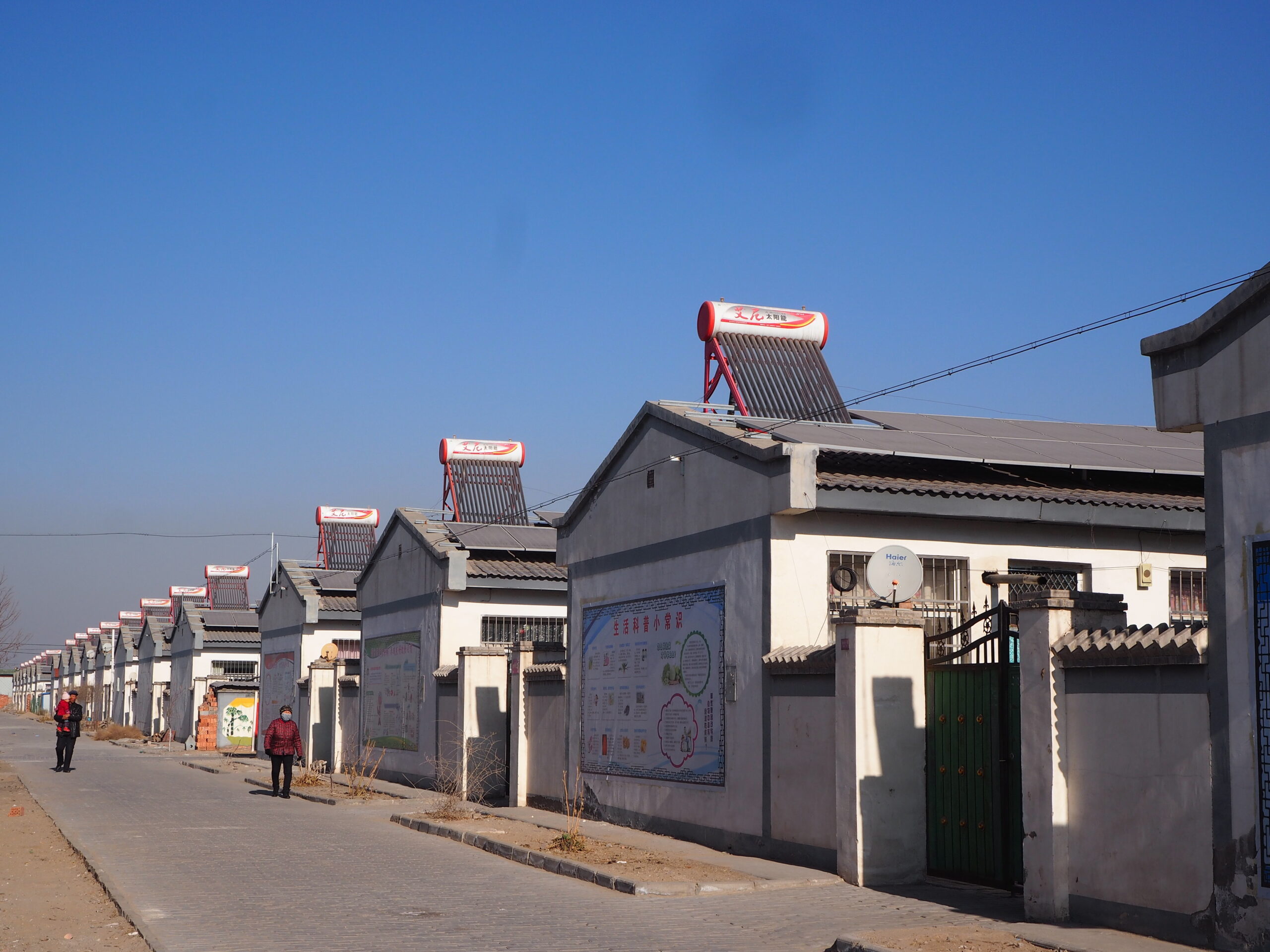
Left behind in Xihaigu
It’s rare to see young people of working age in Xihaigu nowadays. They’ve left the old folk behind to plant the fields and look after the cattle, maybe returning to help out with the harvest.
Children like Ma Lina and An Xiaokang also help out with the harvest. An Xiaokang’s father was left paralysed after a car accident and his mother has liver disease so he and his brother do all the physical labour after school. An Xiaokang points toward the fields of winter wheat, just starting to turn green, and tells me it was all planted by him and his brother.
The two brothers aren’t doing anywhere near well enough at school though to get into senior middle school. Their grandfather has decided that if they fail the entrance exam An Xiaokang will join the army and his brother will study to be a chef.
“When they’re gone we won’t plant the fields any more, it’s too difficult without the people,” he says, smoking a roll-up cigarette and watching the television. The old folk think the only hope for the younger generation is to leave.
An Xiaokang’s family only has one cistern, in the yard. “It’s not a good one,” he says, the water’s dirty, and they usually just use it for the livestock. Once a week he and his brother pull carts to a well at the border of Licha and Panjiagou and bring back two 50 litre barrels of drinking water.
There was a hailstorm on the night of December 24, 2016, and when An Xiaokang woke up on the 25th the road was slippy and covered with pellets of ice. That was a Sunday, usually the day students head back to their schools, and the day they go to collect water. But the frozen road meant the trip to collect water was too dangerous.
If An Jianhua had the choice he’d move the whole family somewhere flatter and closer to water. Then when his grandchildren left home his son and daughter-in-law could find some light work on the outskirts of the city. He doesn’t understand why Licha has been overlooked in the relocations.
Life in the new town is not for everyone. Jobs are scant and opportunity seems to lie elsewhere in far-away cities. The freshly built identikit houses may be built to last but at the same time seem so temporary.
Editor’s Note:
This long read forms the third part of our investigative series into adaptation projects in China. This special report on the government’s ongoing mass relocation project in Ningxia province, one of world’s biggest movements of “climate migrants”, was conducted over several weeks during which time the reporter lived in the village among the remaining residents.
